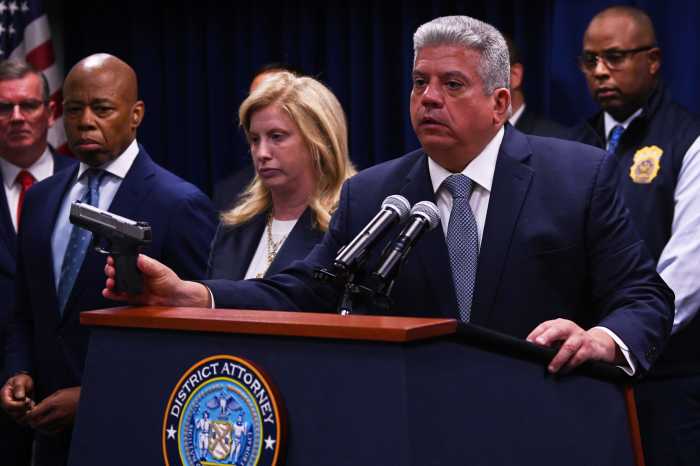
Nearly two months after revising standards for testing lead levels in children’s blood to be stricter, the city’s Department of Health revealed year-to-date data on Thursday showing a downward trend.
Between January and June, 61 children in NYCHA under the age of 6 were found to have elevated blood lead levels, in addition to 16 minors between ages 7-18. The numbers reflect a blood lead level of 5 micrograms per deciliter or higher — the Center for Disease Control standard for when parents should be notified.
Although the data represents only half of the year, Health Commissioner Dr. Mary Bassett, who will leave office Friday, said they show a significant downward trend.
More than 13,900 children under age 6 were identified in 2010, including 425 living in NYCHA residences. So far this year, only 2,193 have been identified citywide.
“By any measure you can see that the numbers of children with upgraded blood lead levels has gone down,” she said.
Bassett said aging infrastructure in both private and NYCHA buildings has been a leading cause of cases among city kids.
“This difference in risk is likely due to the fact that the housing stock in private housing is older in general than the housing stock in public housing,” she said. “Houses built before 1950 when lead based paint was more in use, are more likely to be private housing.”
In July, the mayor announced the city would investigate all New Yorkers under 18-years-old whose blood lead levels tested positive for 5 micrograms per deciliter or higher. Previously a 10 microgram per deciliter-or-higher result was required to trigger an investigation.
The move came after the city settled a federal lawsuit and admitted it misled investigators about the scope of lead paint in its apartments. The settlement revealed that 68 children living in NYCHA units between 2010 and 2015 had major health issues, including brain function defects, due to their exposure to lead paint.
Bassett acknowledged that the new blood level figures may confuse New Yorkers who have been trying to track the latest figures of NYCHA lead cases, but she assured that the city is taking the problem seriously.
She noted that among children born in 2013, 88 percent of those living in NYCHA were tested for lead by age 3 — about 14 percentage points higher than the same-aged children living in private housing.
With the city’s new policy in place, Bassett estimated that the health department will handle an additional 4,185 environmental cases a year. The agency hired about 40 additional environmental inspectors for those cases and plan on acquiring and training more staff soon, according to Bassett and her deputy commissioners.
“We know there is still more work to be done,” she said.


































